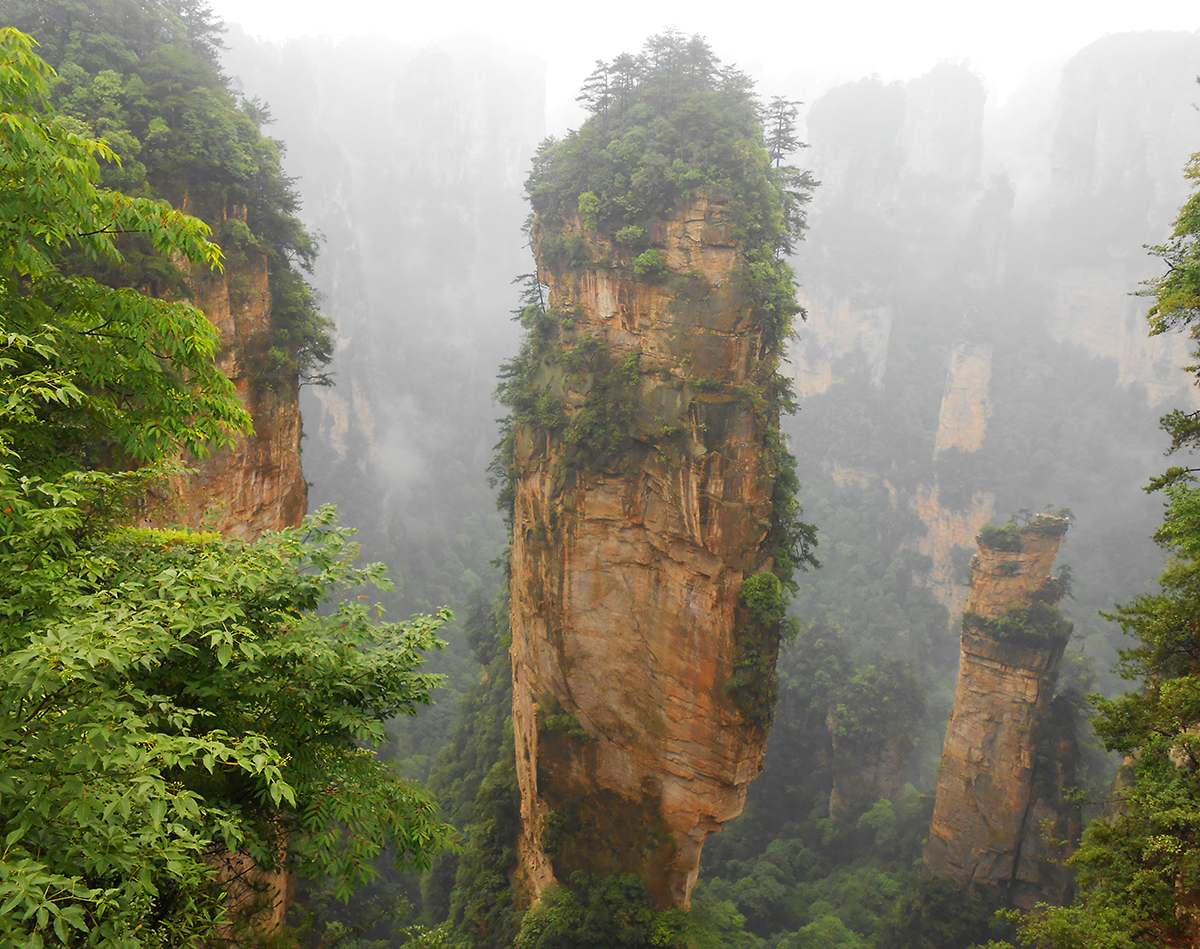
What is the Culture of Zhangjiajie?
As you know, Zhangjiajie is rich in cultural heritage, home to diverse ethnic groups including the Tujia and Miao, whose traditions and customs have been preserved for centuries. These groups make up 77 percent of Zhangjiajie's total population.
The culture of Zhangjiajie is an enchanting blend of natural wonders and rich human history. The region is primarily shaped by the traditions and customs of the Tujia and Miao ethnic groups, who have called these mountains home for generations.
The Tujia People
The Tujia people are known for their vibrant traditions, particularly their music, costumes, and craftsmanship.
- Music: Tujia music is characterized by its use of traditional instruments like the ba guan (a type of wind instrument), the suona (a double-reed horn), and the dagu (a large drum). These instruments accompany folk songs and dances that tell stories of their history, legends, and everyday life.
- Costumes: Tujia clothing is colorful and intricately made, often featuring hand-embroidered designs of animals, plants, and geometric patterns. Women's attire typically includes a short jacket, a long pleated skirt, and an embroidered apron. Men traditionally wear loose-fitting shirts and trousers.
- Craftsmanship: The Tujia people are skilled in various crafts, most notably batik dyeing and silversmithing. Batik is a resist dyeing technique that uses wax to create patterns on fabric, while silversmithing results in beautifully crafted jewelry and ornaments.
The Miao People
The Miao people, another significant group in Zhangjiajie, also contribute significantly to the cultural landscape.
- Music: Similar to the Tujia, the Miao people value their musical heritage. They use instruments like the lusheng (a type of mouth organ), the xiao (a vertical flute), and the dongjing (a bronze drum) to create their distinctive melodies.
- Costumes: Miao women are renowned for their elaborate silver headdresses, which can weigh several kilograms and are passed down through generations. Their clothing is adorned with intricate embroidery, often featuring bright colors and geometric patterns.
- Festivals: The Miao people are known for their vibrant festivals, such as the Lusheng Festival and the Sisters' Meal Festival. These festivals involve elaborate costumes, energetic dances, and traditional music, providing a window into their rich cultural heritage.
Shared Cultural Elements
Beyond the distinct traditions of each group, several cultural aspects are shared by both the Tujia and Miao people in Zhangjiajie.
- Language: While both groups have their own languages, Mandarin Chinese is widely spoken and serves as a common language for communication.
- Cuisine: The cuisine of Zhangjiajie reflects the agricultural traditions of the region, with an emphasis on fresh, locally sourced ingredients. Dishes often feature rice, corn, vegetables, and pork, flavored with a variety of spices and chili peppers.
- Architecture: Traditional houses in Zhangjiajie, known as diaojiaolou, are typically wooden structures built on stilts. These unique buildings serve a practical purpose, providing protection from floods and wild animals while also reflecting the resourcefulness of the people.
Cultural Experiences in Zhangjiajie
Visitors to Zhangjiajie have numerous opportunities to immerse themselves in the local culture:
- Attend a cultural performance: Enjoy a captivating performance featuring traditional Tujia and Miao music and dance, providing a glimpse into their vibrant heritage.
- Visit a local village: Experience the daily life and customs of the Tujia and Miao people firsthand by visiting a local village and interacting with the residents.
- Sample local cuisine: Indulge in the unique flavors of Zhangjiajie by trying local delicacies and specialties at restaurants and food stalls.
Summary of Cultural Elements in Zhangjiajie
To provide a clear comparison, here is a table summarizing the key cultural elements of the Tujia and Miao people:
| Feature | Tujia | Miao |
|---|---|---|
| Music | *Ba guan*, *suona*, *dagu* | *Lusheng*, *xiao*, *dongjing* |
| Costumes | Hand-embroidered designs, short jackets, pleated skirts | Elaborate silver headdresses, brightly colored clothing |
| Crafts | Batik dyeing, silversmithing | Embroidery, silverwork |
| Festivals | Shared local festivals | Lusheng Festival, Sisters' Meal Festival |
FAQs About Zhangjiajie Culture
Here are some frequently asked questions about the culture of Zhangjiajie:
- Q: What is the best time to experience cultural festivals in Zhangjiajie?
A: The timing of festivals varies, but spring and autumn generally offer pleasant weather and coincide with several important celebrations.
- Q: Are there opportunities to learn traditional Tujia or Miao crafts?
A: Yes, some villages and cultural centers offer workshops and demonstrations where visitors can learn about and try their hand at traditional crafts.
- Q: What is the cultural significance of the diaojiaolou houses?
A: Beyond their practical uses, these houses embody the resilience and adaptability of the Tujia and Miao people, representing a harmonious relationship with the natural environment.